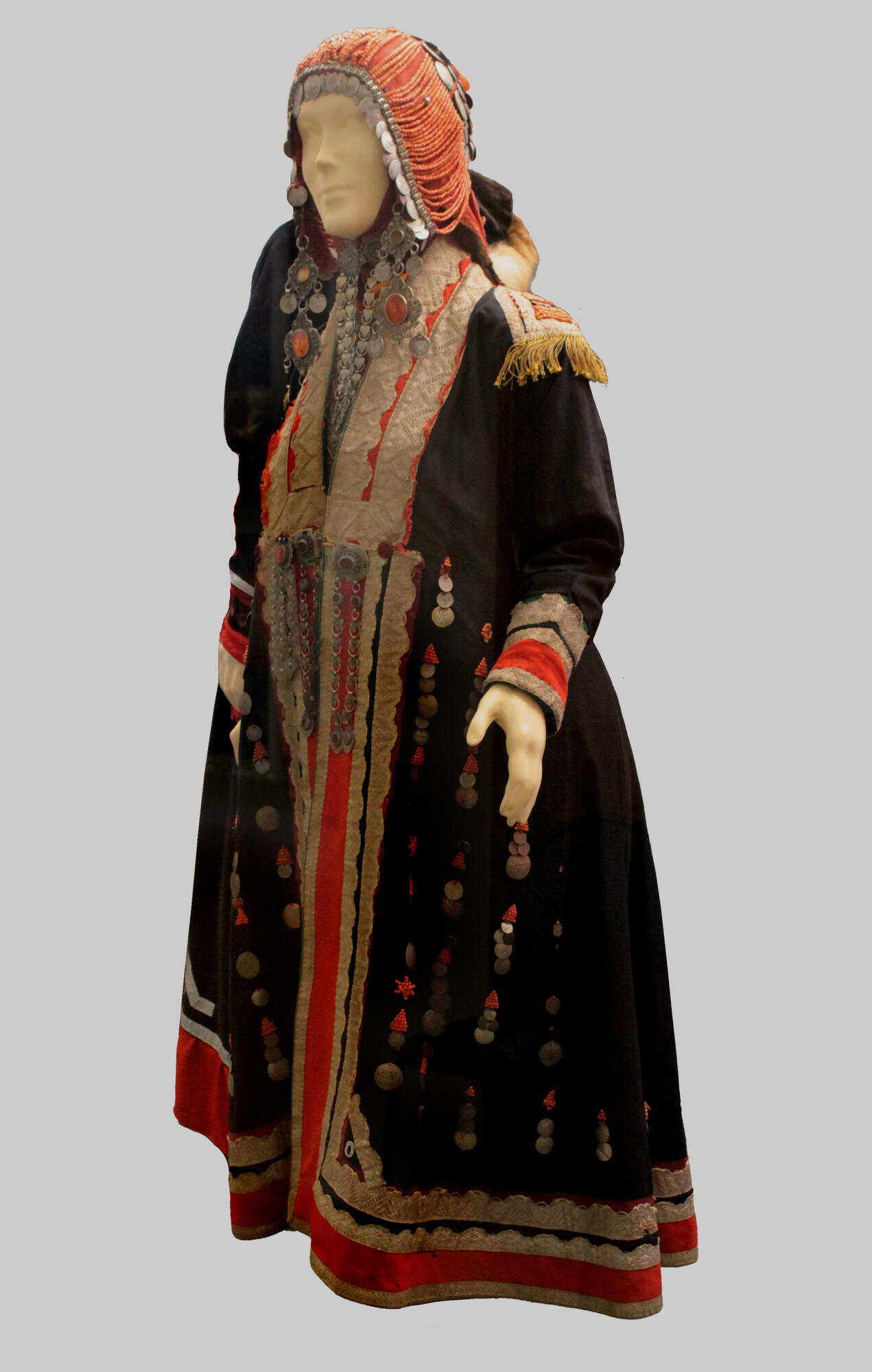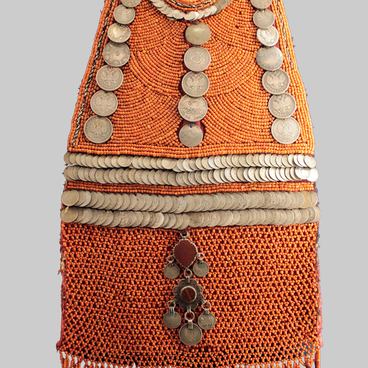An elyan is an unfastened robe that is part of a Bashkir woman’s outfit. Depending on the material and the amount of ornamentation, women’s robes were very diverse, ranging from completely simple cloth robes, with virtually no decorations, to the velvety, richly decorated robes for wealthy Bashkirs.
It was these women’s elyans that scientists and travelers who visited the Bashkir region had in mind when they wrote about decorative outer garments with embroidery, corals, beads, and coins.
In terms of its appearance, the elyan was a loose-fitting garment that came down below the knees, and was somewhat narrowed at the waist and wide along the hems, with a shawl collar.
Black cotton fabric usually served as the material for the robes, and less frequently they were sewn from bright, half-silk fabric, and sometimes from cotton velvet or velvet. The robe always had a lining.
Stripes of red or blue-green fabric, or braiding, gave the clothes vibrancy: red fabric was sewn in a circle along the edges of the sides, along the hem, and at the ends of the sleeves; in addition, they were trimmed in several rows with stripes of braids, wide around the neck and on the chest, and comparatively narrower at the hem. And in the decoration for the elyan, when it was trimmed with braiding, two large triangles often took shape on its right and left flaps, easily discernible in the costume’s ensemble.
Coins and stamped metal plaques were sewn on the flaps, and along the hem. The sun and stars were a widespread ornamental motif in embroidery on robes from southeastern areas. The sun was depicted not only in embroidered form as concentric circles with multicolored rays, but also using coral threads. Triangles were also made out of coral. White beads were often introduced into the embroidery and covering on the flap. Braiding was used to make stripes at the top of the back and along the waist. On clothes for holidays, there was goose and swan down, multicolored tassels, shells, colored buttons, pieces of glass, and carnelian. Some robes from southeastern areas have decorative components, such as shoulder epaulets made of braiding with fringes made from threads with beads on the ends.
Often elyans had a metal fastener with pendants on the chest; if there was no clasp, the flaps fell freely down, leaving the chest open.
It was these women’s elyans that scientists and travelers who visited the Bashkir region had in mind when they wrote about decorative outer garments with embroidery, corals, beads, and coins.
In terms of its appearance, the elyan was a loose-fitting garment that came down below the knees, and was somewhat narrowed at the waist and wide along the hems, with a shawl collar.
Black cotton fabric usually served as the material for the robes, and less frequently they were sewn from bright, half-silk fabric, and sometimes from cotton velvet or velvet. The robe always had a lining.
Stripes of red or blue-green fabric, or braiding, gave the clothes vibrancy: red fabric was sewn in a circle along the edges of the sides, along the hem, and at the ends of the sleeves; in addition, they were trimmed in several rows with stripes of braids, wide around the neck and on the chest, and comparatively narrower at the hem. And in the decoration for the elyan, when it was trimmed with braiding, two large triangles often took shape on its right and left flaps, easily discernible in the costume’s ensemble.
Coins and stamped metal plaques were sewn on the flaps, and along the hem. The sun and stars were a widespread ornamental motif in embroidery on robes from southeastern areas. The sun was depicted not only in embroidered form as concentric circles with multicolored rays, but also using coral threads. Triangles were also made out of coral. White beads were often introduced into the embroidery and covering on the flap. Braiding was used to make stripes at the top of the back and along the waist. On clothes for holidays, there was goose and swan down, multicolored tassels, shells, colored buttons, pieces of glass, and carnelian. Some robes from southeastern areas have decorative components, such as shoulder epaulets made of braiding with fringes made from threads with beads on the ends.
Often elyans had a metal fastener with pendants on the chest; if there was no clasp, the flaps fell freely down, leaving the chest open.



